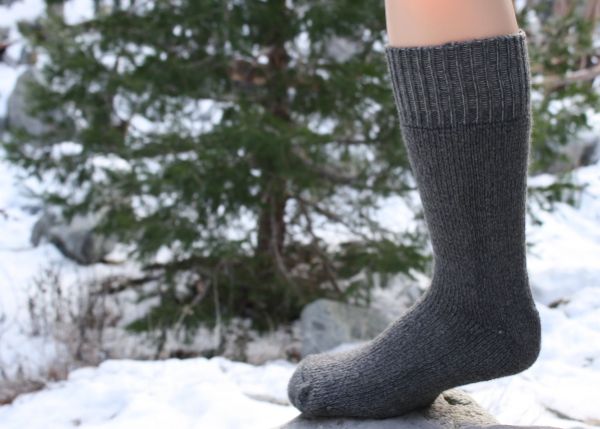As the temperature drops and winter sets in, keeping your feet warm and protected becomes essential. Investing in the right winter socks is crucial to combat the extreme cold and maintain comfort and insulation.
Here we will explore everything you need to know about choosing the best winter socks for extreme cold conditions. From materials to insulation and other important features, we’ll help you find the perfect socks to keep your feet toasty warm during winter.
Insulating Materials
When selecting winter socks for extreme cold, prioritize materials known for their insulation properties. Consider the following options:
- Merino Wool: Merino wool is a popular choice for winter socks due to its excellent insulation, moisture-wicking capabilities, and softness. It naturally regulates temperature, keeping your feet warm without overheating.
- Synthetic Fibers: Look for socks made from synthetic fibers like polyester or acrylic. These materials are known for their insulation properties, moisture-wicking abilities, and quick-drying characteristics.
- Cashmere: For added luxury and warmth, consider cashmere socks. Cashmere provides exceptional insulation and a soft, cozy feel, making it ideal for extremely cold temperatures.
Thickness and Layering
Opt for thicker socks to provide additional insulation and warmth during extreme cold conditions. Thick socks trap more warm air close to your skin, acting as a buffer against the cold. However, ensure that the thickness does not compromise the fit of your shoes or restrict circulation. Layering thinner socks is also an option, as it creates air pockets between the layers, offering enhanced insulation.
Moisture-Wicking Properties
Moisture-wicking is an essential feature to consider in winter socks. Even in cold weather, your feet may sweat, and dampness can lead to discomfort and coldness. Look for socks with moisture-wicking properties to keep your feet dry and prevent moisture buildup, which can contribute to cold feet and potential frostbite.
Cushioning and Padding
Winter socks should provide ample cushioning and padding to protect your feet from the cold ground and provide additional insulation. Look for socks with cushioned soles and reinforced areas like the heel and toe to offer extra comfort and protection against the impact of walking or standing for extended periods.
Snug Fit and Compression
Choose winter socks with a snug, but not overly tight, fit. A proper fit helps to retain heat and ensures the socks stay in place without slipping or bunching up. Compression socks can also be beneficial, as they improve blood circulation and help prevent cold feet by promoting warmth and reducing swelling.
Length and Coverage
Consider the length of the socks for added coverage and protection. High-cut or knee-length socks provide insulation for the lower legs and can be particularly beneficial in extreme cold conditions. Ensure the socks fit well around the calves without restricting movement or causing discomfort.
Seamless Construction
Look for winter socks with seamless construction to prevent irritation and rubbing against your skin. Seamless socks provide a smooth and comfortable fit, minimizing the risk of blisters or chafing, especially during long walks or outdoor activities in the cold.
Consider Specialized Winter Socks
In addition to traditional winter socks, you may also consider specialized options designed for extreme cold conditions. These include:
- Thermal Socks: Thermal socks are specifically designed to provide maximum insulation and warmth. They often feature multiple layers or extra-thick materials to combat extremely low temperatures.
- Heated Socks: Battery-powered heated socks are an excellent option for those who require additional warmth. These socks have built-in heating elements that provide continuous warmth for extended periods.
Conclusion
When facing extreme cold temperatures, investing in the right winter socks is crucial for keeping your feet warm and comfortable. Consider socks made from insulating materials such as merino wool, synthetic fibers, or cashmere. Look for socks with moisture-wicking properties to keep your feet dry and prevent coldness. Opt for thicker socks or layering thinner socks to provide extra insulation. Cushioning, a snug fit, and proper length are important for comfort and protection. Seamless construction reduces irritation, while specialized options like thermal socks or heated socks offer additional warmth in extreme conditions.
Remember, keeping your feet warm is essential for overall comfort and preventing frostbite during winter. By choosing the right winter socks that prioritize insulation, moisture-wicking, cushioning, and a comfortable fit, you can enjoy outdoor activities, work, or simply stay cozy indoors, even in the most frigid temperatures. Stay warm and embrace the beauty of winter without compromising on foot comfort and well-being.

For over 12 years, I have been testing and reviewing heating technologies that overcome cold weather conditions. In recent years, I have specialized in the heated apparel. I’ve made it my mission to educate people about heated clothing.
